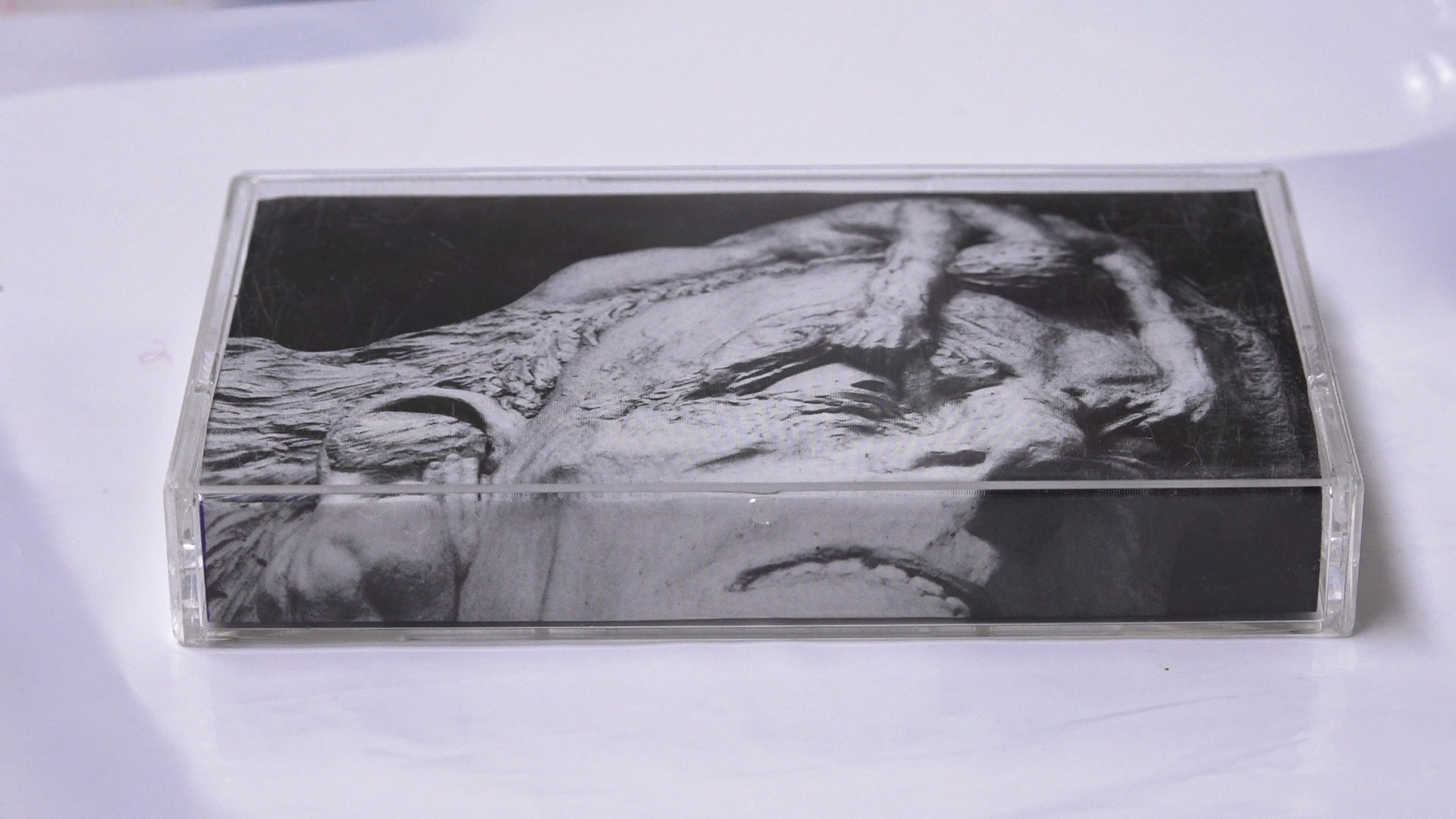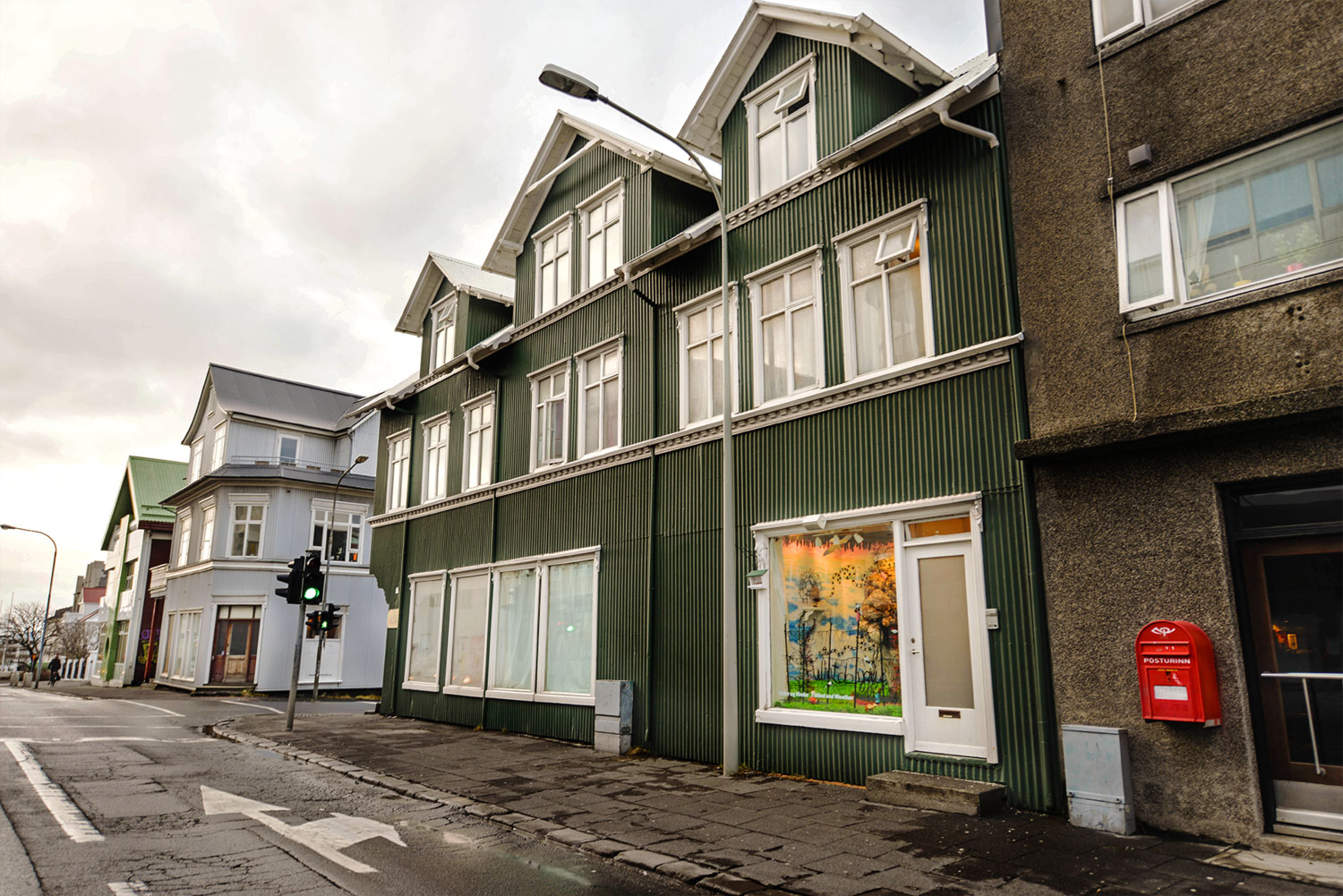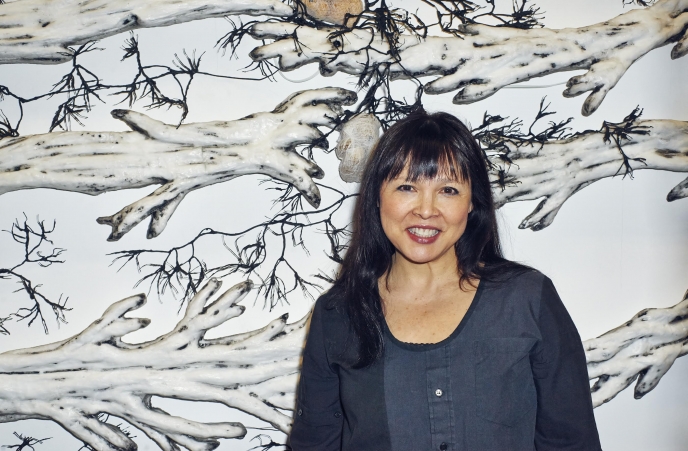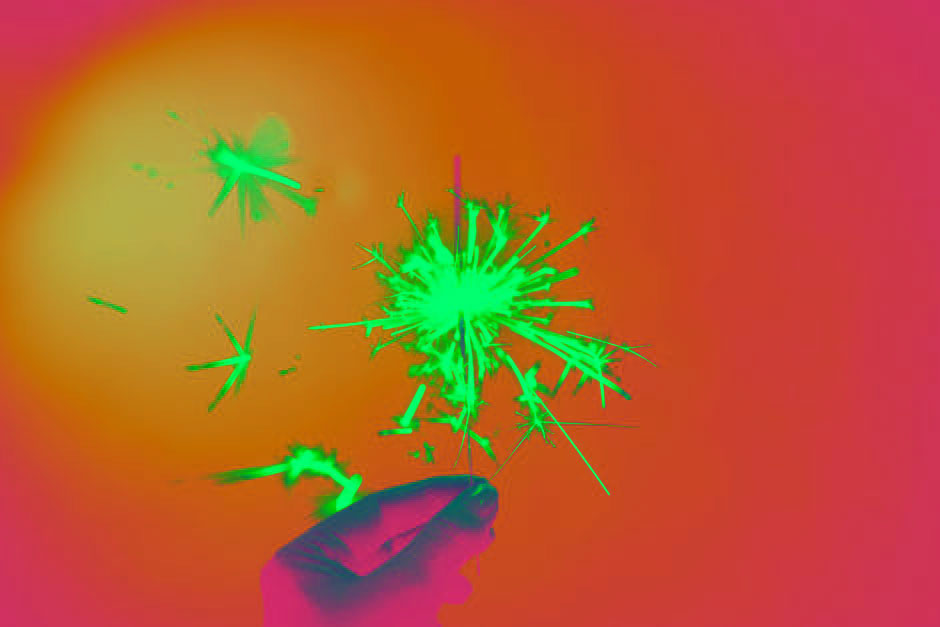Kathy Clark, curator of Wind and Weather Window Gallery and collaborator in The Presence, has been holding exhibitions for the past three years at Hverfisgata 37. Kathy works in sculptural installations and found objects in her studio beyond the window gallery. The exhibition space incorporates a quotidian atmosphere in which everyone is part as passersby can experience the exhibition from the street. I spoke with Kathy while work on The Presence was underway to find out more.
Do you feel that the studio makes an impact on how things are composed in the gallery, and/or vice versa?
They are quite separate. It was in the beginning just me showing my work and then I started going to openings and meeting people. Later, I started asking people if they were interested in showing in my window gallery and everyone was really excited at the idea. Because people are walking and driving by, the idea is that it is art for everybody. Not everybody walks into an art gallery as it is more closed and can be only people who are interested in art go. It’s very much a DIY venture, which people are very responsive to here in Reykjavik.
As a non-commercial gallery, everything operates on an exchange of ideas with the artists exhibiting. Wind and Weather Window Gallery and its publicness allow a curious interplay as one usually finds this type of window full of commercial advertisements or products for sale. When that is replaced by a display whose agenda it is up to the viewer to decide, many things can happen.
Each exhibition runs for two months, quite some time in the space of a year. All of the wider socio-political events taking place in that time frame seem to become part of the public dialogue as the window gallery is part of public life. The everyday holds this presence that is at once everywhere and nowhere. There is also the idea that the everyday can be more confrontational to things in the wider world, especially outside of the art world, and in a way that art institutions cannot address as potently. There is a democracy to the everydayness as it is in the day-to-day where encounters happen that invoke real change.
Do you see that being a non-commercial gallery affects what the artists choose to exhibit?
True art to me comes from the person. What do they want to share with the world and what do they want to express? If that becomes a trend, that’s great, but more importantly is just that the artist expresses what the artist needs to say. What does it mean to them? I think it is becoming more and more a minor point in the discussion. I know artists go to school and become affected by their peers and teachers. But all of the factors leading up to where you make the decisions you make is very important. Where along the line have those decisions come from? Basically it is a question of choice for the person. Of the whole realm of that person what does that decision mean for you? I try to draw that out of the artists exhibiting when we have dialogues.
Since 2013, Wind and Weather Window Gallery has shown a variety of artists, both local and from abroad. In 2013, the gallery featured work by Kathy Clark, Steinunn Harðardóttir, Rebecca Erin Moran, and Claudia Hausfeld. In 2014, Auður Ómarsdóttir, Dóra Hrund Gísladóttir, Sigga Björg Sigurðardóttir, Ragnheiður Káradóttir, Guðlaug Mía Eyþórsdóttir, and Ásta Fanney Sigurðardóttir. In 2015, Ólöf Helga Helgadóttir, Myrra Leifsdóttir, Ragnhildur Jóhanns, Serge Comte, Ámundi, and Amy Tavern. In 2016, Haraldur Jónsson, Christopher Hickey, Halldór Ragnarsson, Linn Björklund, Úlfur Karlsson, and Anne Rombach exhibited. The space has experienced performance, video, installation, and many hybrids. From 2015-2016, Kathy also had a space on Laugavegur called Better Weather Window Gallery which featured exhibits by Halla Birgisdóttir, Johannes Tasilo Walter & Rebecca Erin Moran, Steingrímur Eyfjörð, Guðrún Heiður Ísaksdóttir, David Subhi, Sigurður Ámundson, Lukka Sigurðardóttir, Leifur Ýmir Eyjólfsson, Nikulás Stefán Nikulásson, Claudia Hausfeld, Freyja Eilíf Logadóttir, and Snorri Ásmundsson.
Do you feel like a curator in any sense?
We do talk about their ideas and when they come to me. I do have to agree to it because sometimes an artist may have an idea that I don’t think would work in terms of lighting or space. More often than not I am open to their ideas. I’m also here to give advice and support and bounce off ideas and ask questions. I’m interested in finding out what are they trying to say with their work. You have this whole space so I want the artist to consider the whole space. It’s this exchange that has been so potent. It has nothing to do with commercializing. I pay for the sign and I give my time. The only thing I ask for is an art piece in exchange. So it is an exchange of energy from one artist to another.
Although Kathy does not describe herself as a curator of Wind and Weather Window Gallery, her role brought to mind older contexts of the term ‘curator.’ Looking at the etymology of the term ‘curator’ we see it comes from the Latin cura, which means ‘to cure.’ In the middles ages the term was linked to the two curious positions of both the parish priest who was the ‘curate of souls’ and a more bureaucratic keeper of books and public records. In some ways the modern curator is still a curious mix of these two roles, procuring a kind of aesthetic cure for society. In Kathy’s case, the exchange of time and space with local artists does as much for the public.
Erin Honeycutt











 Mér fannst það mikilvægt til þess að styrkja orðræðu og þekkingu á skapandiferli. Ég var búin að kenna sama námskeiðið í LHÍ í mörg skipti og 5 síðustu með Huginn Þór Arasyni myndlistarmanni, við vorum búin að þróa kennsluaðferðirnar okkar mjög mikið og safna í góðan reynslubanka. Ég vildi halda utan um þessa þekkingu og gefa fleirum tækifæri á að nýta sér hana.
Mér fannst það mikilvægt til þess að styrkja orðræðu og þekkingu á skapandiferli. Ég var búin að kenna sama námskeiðið í LHÍ í mörg skipti og 5 síðustu með Huginn Þór Arasyni myndlistarmanni, við vorum búin að þróa kennsluaðferðirnar okkar mjög mikið og safna í góðan reynslubanka. Ég vildi halda utan um þessa þekkingu og gefa fleirum tækifæri á að nýta sér hana.


